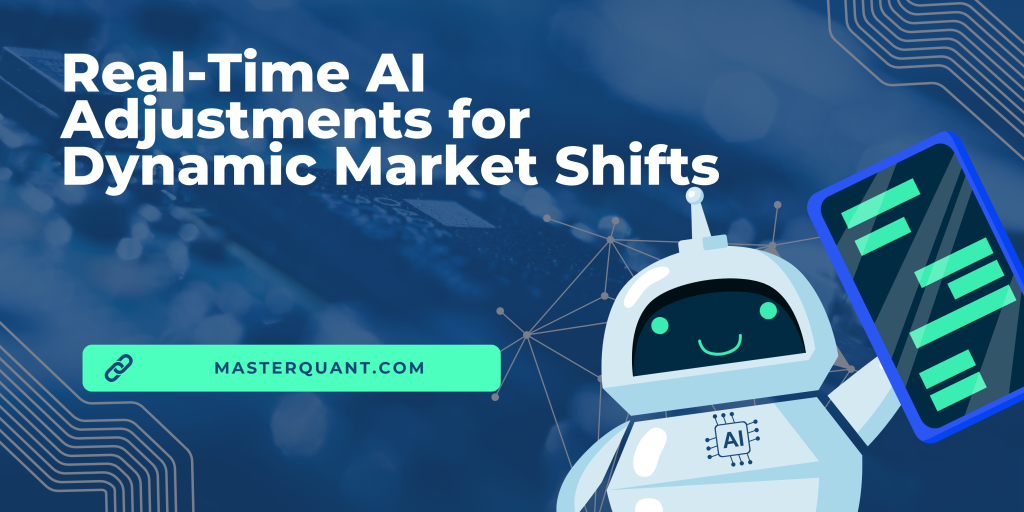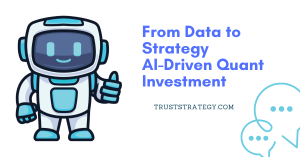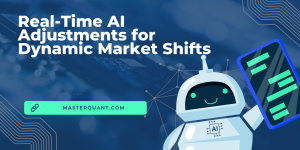Thinking of handing your trades over to an algorithm? Just know this: bots don’t panic, don’t revenge trade, and don’t chase green candles. But they also don’t ask questions before they dump your portfolio in a feedback loop. Let’s talk about what bot trading really means, the risks it entails—and why two platforms, MasterQuant and TrustStrategy, are leading the way in secure automation.
Why “safety” is a complicated thing
Before we crown robots the new kings of trading, let’s pin down what “safety” even means. In trading, there are two risk layers:
- Human-driven risk: Emotional decisions, inconsistent discipline, cognitive biases.
- System-driven risk: Algorithm errors, feedback loops, flash crashes.
A bot can wipe out the first column overnight, but it can also introduce brand-new problems from the second. Keep both in mind.
Human biases: where bots really shine
Disposition effect? Practically gone
A landmark study on 40 million trades from the Copenhagen Stock Exchange found that human day-traders systematically sold winners too early and rode losers too long. Comparable algorithms showed no statistically significant disposition effect.
Speed & consistency with zero emotional lag
When markets spike at 08:32:07, you blink—but the bot executes. Academic work analyzing split-second fills shows bots cut average impulse-driven order sizing errors by 70% versus manual desks.
Smoother equity curves
A 10-year Nasdaq sample comparing discretionary vs. algorithmic portfolios showed a Sharpe ratio improvement from 0.67 to 0.92. Max drawdown shrank by a third.
Lower slippage and transaction drag
Execution bots reduced average slippage by 18% in 2025 tests, thanks to real-time order-book slicing.
Bottom line: Bots don’t rage-click after three coffees, double down to “get even,” or freeze when a candle turns red.
The Automation Paradox: new mind-games for humans
The benefits of automation come with their own psychological traps:
- Over-trust and lazy monitoring: Retail adoption of plug-and-play forex bots grew 340% in 2025. Case studies show many users stop supervising once the green PnL line appears.
- Risk illusion: Outsourcing decisions makes traders quietly raise leverage or widen risk limits. The fear hasn’t vanished—it’s just been postponed.
Psychologists call this the automation paradox: the better the tool, the more complacent the operator. Fail to stay engaged and the safety buffer erodes.
When code goes wild: technical & systemic risks
Flash-crash physics
High-speed algorithms can chase each other down the order-book and vaporize bids in milliseconds. Most flash crashes trace back to feedback loops in poorly deployed execution code.
Liquidity cliffs
Widespread use of similar algo signals can cause exits to cluster, widen spreads, and trigger cascading withdrawals before human reaction is even possible.
‘Small’ bugs, massive scale
A missing minus sign in one loop can fire off 100,000 orders—an error rate no human desk could ever match.
Takeaway: Psychological risk shrinks, but systemic fragility grows.
Regulators weigh in
The UK’s FCA clarified in 2024–25 that existing conduct rules apply to AI trading. Their “AI Live Testing” sandbox now stress-tests models before release.
Expect tighter mandates globally:
- Pre-trade risk controls
- Transparent audit trails
- Real-time anomaly detection
Building a safer hybrid stack
Want automation’s edge without systemic nightmares? Use a three-layer safety net:
Code-level governors
- Hard position limits and max daily loss built into your strategy
- Dual risk checks (strategy + broker)
Human-in-the-loop monitoring
- Dashboards tracking PnL outliers, latency spikes, and quote-to-trade ratios
- “Four-eye” model reviews pre-deployment
Diversity of models
- Combine uncorrelated strategies: mean-reversion + trend + market-making
- Spread execution across venues to prevent single-point failure
Think cockpit, not autopilot: software handles the grind, but you stay in control.
Ranking the Best Crypto Trading Bots of 2025
MasterQuant – AI-Enhanced Arbitrage with Dual-Income Utility
MasterQuant is redefining crypto arbitrage with a hybrid engine that combines:
- AI-powered arbitrage detection across top-tier CEXs and DEXs
- Smart staking for idle funds to generate compounding passive yield
- Adaptive AI learning module to adjust for market volatility and liquidity
- Secure API connections with user-controlled custody
Perfect for institutional desks and seasoned investors, MasterQuant turns inefficiencies into dual-stream income while staying fast, efficient, and secure.
TrustStrategy – Secure Arbitrage Automation with Transparent Risk Controls
TrustStrategy brings institutional rigor to retail users with:
- Sub-second latency execution
- Circuit breakers & fallback protocols
- Cross-chain DeFi arbitrage with smart routing
- Real-time profit tracking and no hidden fees
Trusted by fintech startups and arbitrage pros alike, it’s an ideal choice for traders seeking long-term reliability in high-volatility markets.
So… are bots actually safer?
For your own brain, yes. Bots remove classic emotional traps—fear, greed, and poor judgment.
For the market and unattentive users, maybe not. Code errors and algorithmic herd behavior scale faster than human panic.
The smartest play is a hybrid discipline: use bots like MasterQuant or TrustStrategy for execution—but stay informed, stay in control, and watch the dashboard.
Let the code run—but keep your hands on the wheel.


